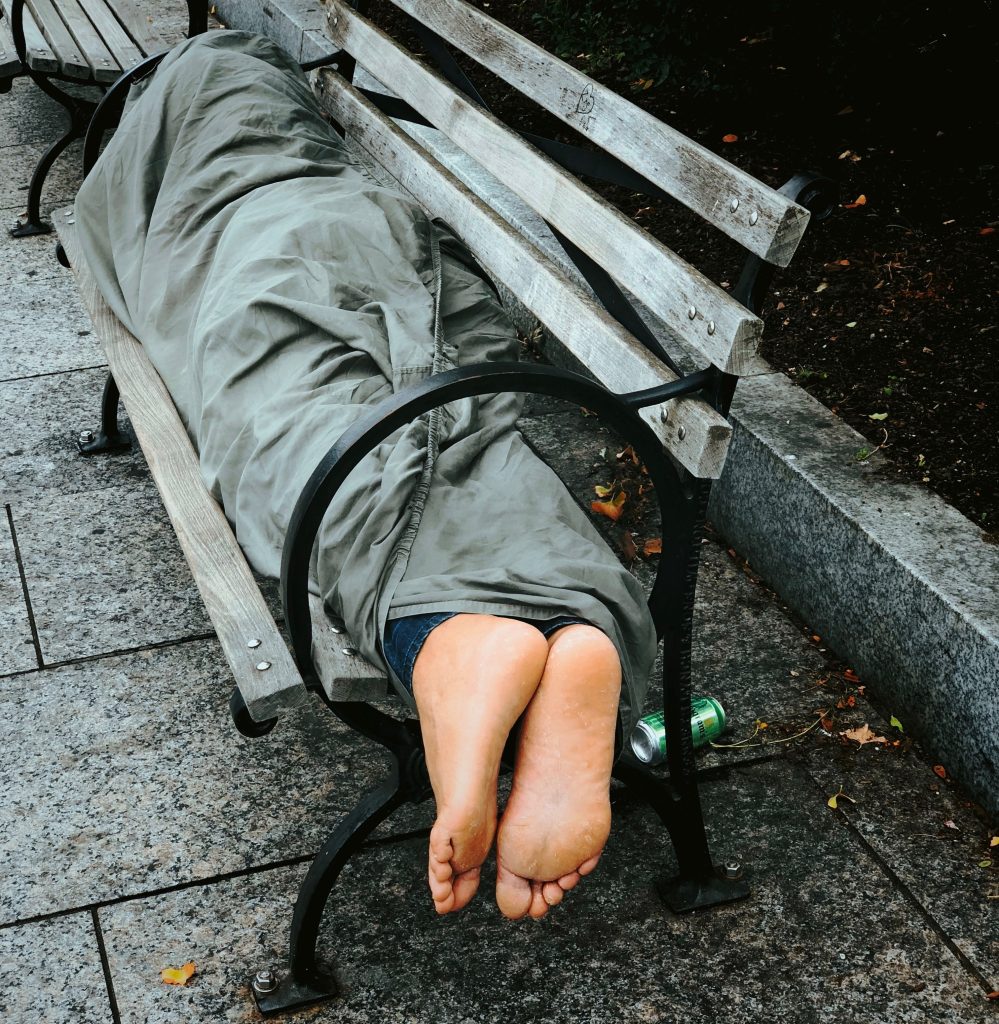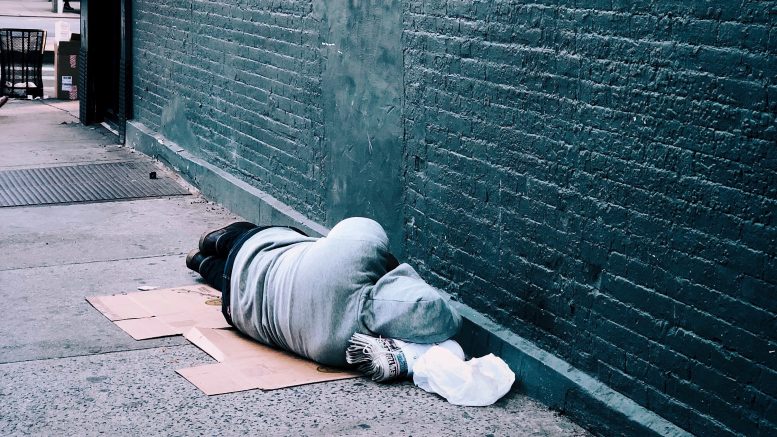In the wake of death and suffering on the streets, and within family homes, the debate around forced hospitalization enters a new phase
By Ariel Caspar and Mary Cortez
Alison Monroe watched as her daughter suffered from delusions that made her believe she was pregnant and needed meth to keep her unborn baby alive.
Fearing for her daughter’s safety, Monroe sought to get her adequate help by having her involuntarily committed.
“I lost my fight with the county to keep her in a locked facility where she couldn’t take meth,” the mother recalled. “They just didn’t have any room for her.”
Monroe, who lives in Alameda County, said her daughter died in late September due to an overdose on meth and fentanyl. She is now part of Families Advocating for The Seriously Mentally Ill, an organization whose mission is to advocate for the needs of those with serious mental illnesses.
“I wanted her alive and safe, and under current law it was difficult,” Monroe said.
She added that a new law recently signed by the governor would have been able to help save her daughter.
SB 43 will expand the meaning of the term “gravely disabled” to simplify and speed up the process of involuntarily committing a person suffering from a continuing severe mental health disorder, a severe substance use disorder or both.
The new measure is a continuation and expansion of the existing law outlined in the 1967 Lanterman-Petris-Short Act, which was implemented to end inappropriate and involuntary commitment of individuals with mental health disorders and to protect the individual’s rights while still getting them into the care they need in the least restrictive way possible.
SB 43 defines the term “gravely disabled” as an individual who is a danger to themselves and others, and suffering from a mental health and/or severe substance use disorder. It makes it possible to involuntarily commit “gravely disabled” people when their conditions render them unable to provide themselves basic needs or maintain personal safety.
Dr. Alexis Seegan, chair of the California State Association of Psychiatrists’ Government Affairs Committee, said the old definition of “gravely disabled” left a lot of people who can’t care for themselves without any treatment.
“Right now, the definition of gravely disabled is very strict,” Seegan observed. “It’s the inability to provide oneself with food, clothing or shelter. By the strictest version of that, if you are able to hold a box over your head when it rains you’re not gravely disabled.”
The new law adds substance abuse disorder as a mental health condition. It also expands the term to include those who are not able to take care of a medical condition.
“I know there is a lot of concern in the community on how we are going to treat all these people,” Seegan said. “These people are already here, they’re already in the ER, these are individuals who have had 25 admissions in the last six months.”
Opponents say the new law could violate the civil rights of those with disabilities, including many homeless Californians. Some also say the bill distracts from a bigger issue: the inability of local governments to fully staff mental health facilities in the community.
“Even if communities wanted to, a) where’s the space? and b) where’s the behavioral health social workers to be able to staff those positions? It doesn’t exist,” said Bob Erlenbusch, executive director of the Sacramento Regional Coalition to End Homelessness. “So, the alternative might very well be what we did in the 19th century with people who were mentally ill, which was to put them in jail.”
A Desperate Situation

Citrus Heights resident Lisa Boots couldn’t sleep one night, so she went into her 2-year-old son Maddex’s room to sleep there instead. She didn’t know she would wake up to her husband Jason Boots standing over her in the dark room staring at her, uttering words that made no sense, “gibberish” as she called it.
Lisa thought he may have been delusional from lack of sleep or a strange dream and told him to go back to bed, but then his behavior took an aggressive turn.
Jason’s irrational, delusional and accusatory behavior would continue for the next day and a half, and he would even complete an entire work day in this state.
“He wasn’t physically violent, but very verbally abusive, yelling, screaming, waving his hands around, lots of threats, it was just very bizarre to see my husband like this,” Lisa remembered. “It was very out of character for him, that’s how I knew something was wrong, but I didn’t know what was wrong. I honestly thought he had a psychotic break from stress.”
What she didn’t know was that her husband had gone into a drug-induced state of psychosis that would last for 24 days. He had been secretly using drugs in combination with drinking alcohol for over three years. She had no idea. This was his first psychotic episode.
To protect her and her son’s life, Lisa drove to her parents’ house to stay there. She called 911 numerous times, but they would not dispatch anyone due to a firearm being reported in the home.
“They understood that my life was at risk,” she argued. “They understood that a 2-year-old’s life was at risk, and they still did not come to do their job.”
As the psychosis progressed, Jason became more irrational. He was calling her 30 to 40 times a day, leaving obscene voice and text messages on her phone accusing her of cheating on him with “demonic spirits.” All the while he was continuing to use drugs and drink.
Jason developed kidney stones and was in excruciating pain leaving him unable to walk or function. After calling 911 again, medical personnel agreed to take him to a hospital so he could receive care for the kidney stones. They came with guns drawn to ensure safety, knowing there was a firearm in the house, and had to drag him across the street to get him in the ambulance. In the ambulance, he would immediately be placed on a 5150, or a 72-hour psychiatric hold.
After running multiple tests on his blood, kidneys, liver and bone marrow, Boots would be told by doctors that he had tested positive for crack cocaine, crystal meth, marijuana and alcohol. He saw only one doctor and one social worker.
“When [the social worker] talked to him, he seemed fine, which is a problem because if I hadn’t been there to show them evidence from my phone of the truth of his condition they would have just released him and he would’ve gotten no help,” Lisa said.
Jason was kept at the hospital because his tests determined that his bone marrow had been affected by all the drugs in his system and lack of nourishment over the last several weeks.
“His body was completely shut down,” Lisa reflected. “He was 118 pounds. He was dying. All the doctors and nurses I talked to who looked at his test results in the hospital said his body was not functioning.”
After treating him, he was put on a 5250 which is a hold of up to 14 days, and he was transferred to a psychiatric facility for further care.
The facility provided group therapy and classes, but only one short one-on-one visit with a doctor daily to evaluate his mental state.
Jason passed his evaluation, although he was still showing signs of delusions while in communication with Lisa, as he was still calling and texting her 30 to 40 times a day insisting that she was cheating on him with “demonic entities.”
The facility released him after only eight days, claiming he was in “stable condition” and was aware of reality. Although he was suffering from delusions and irrational thoughts, Lisa said he was able to convince the staff he was in touch with reality so he could be released earlier.
“That was the end of the care,” she pointed out. “There was no support after that and no exit strategy.”
Medical staff did not move Jason to a rehabilitation program for drugs and alcohol and there was no follow up upon his release, Lisa asserted. As soon as Jason was released, he immediately began using and drinking again. Lisa filed a temporary restraining order and he ended up living in his car.
After several days, she finally convinced him to contact a drug counselor through their health insurance who was able to find him a bed at a treatment facility where he would start and complete a 30-day program. Since his admittance into rehabilitation, Jason has now been sober for over three months. Lisa said he’s proud of how far he’s come and wants people to hear his story as a way of holding him accountable to his family.
Lisa said the new law might have allowed her husband to be committed right away, as soon as she noticed the change in his mental health the first time she called 911. With the new definition of “grave disability,” Lisa believes with the combination of his issues, he would’ve been detained as soon as possible.
“If he didn’t have health insurance or if he didn’t have me pushing him to contact somebody, he wouldn’t have gotten help,” explained Lisa. “And honestly, it should have been involuntary at that point, because he wouldn’t have committed himself. He has long term brain damage now from all the drugs and I don’t think he’ll ever be the same.”
Lisa said she ultimately had wished there were other resources for her to reach out to earlier before it got to the point where he had to be involuntarily committed. She believes had there been help and access to resources beforehand, he would’ve gotten help voluntarily.
Where we’re at

California Senator Susan Talamantes Eggman, the author of SB 43, said is not a stand-alone bill, but part of an entire continuum of care that started with the implementation of the Mental Health Services Act in 2007, a measure that uses a 1% income tax on those who have a personal yearly income exceeding $1 million to fund several levels of mental health care for individuals with severe mental health disorders.
California has spent over $12 billion since 2019 on outreach services, peer support, community health workers and housing for individuals with severe mental health or substance use disorders, according to Eggman.
“We’re now in our seventh round of funding for building out these villages and cottages and expanding facilities to be able to provide the care in the community,” Eggman said.
He added that funding for these measures is always an ongoing issue, but if the state does not focus its spending on improving and expanding county mental health facilities and services, prisons and county jails will continue to be overrun with untreated individuals suffering from severe mental health or substance use disorders.
“Our prisons and our jails are becoming our biggest mental health institutions,” Eggman observed. “That is more expensive and more toxic for our entire demographic. So, this is a reprioritizing and redistribution if you will of the way we spend our money, which hopefully will actually be helping people versus locking people up in prisons, jails and/or morgues.”
The California State Association of Psychiatrists, an organization which advocates for policies that support psychiatrists and patients, also supports the bill.
Seegan, who is the CSAP Government Affairs Committee chair and a psychiatrist at UC Irvine Medical Center, said that sometimes those that are committed can be suicidal and they don’t want someone to prevent them from hurting themselves. That means they are often not in a state of reality and don’t know what’s going on.
Seegan said sometimes these individuals are not aware that they need help and they resist help.
Once they are hospitalized, medical professionals assess whether or not they need to be held for a longer period of time. Sometimes people are in an acute state of intoxication and once they are detoxed, they can leave. If they are held longer, the patient is assessed daily, according to Seegan.
“A good amount of the people that I worked with, they don’t initially understand what happened,” Seegan stressed, “but by the end they are grateful for the services.”
A violation of civil rights? A strain on resources?

Although SB 43 is supported by CSAP and a handful of other psychiatric organizations, along with the Big City Mayors Coalition, the list of opposition is also long, including some disability rights groups and homeless outreach organizations in Sacramento.
Erlenbusch, executive director of the Sacramento Regional Coalition to End Homelessness, said the organization opposes the bill because evidence has shown that voluntary commitment has more long-term effectiveness than involuntary commitment.
“The original goal of the LPS Act was to prevent the involuntary confinement of people with mental health issues and set up a procedure to be able to commit someone who was severely mentally ill, but along with that to protect the civil rights of the person with mental health issues, so it struck a balance,” Erlenbusch submitted.
According to a senate analysis of the bill in September, The Sutter County Board of Supervisors expressed concerns about the impact of SB 43 on county medical resources across the state. They said the bill’s mandated changes may increase workloads for law enforcement, public guardians, courts and behavioral health professionals who are already straining to meet the standards already in place.
In addition, several groups who oppose the bill believe involuntary commitment is inhumane, unethical and a violation of human rights when dealing with mentally ill persons.
Pushing for change

Eggman said there can be some instances of psychosis when a person develops a condition known as anosognosia, a neurological condition in which the patient is unaware of their neurological deficit or psychiatric condition. These individuals are so severely psychotic that they are not aware that they are ill and need emergency care.
“We all agree that voluntary is always best, but when somebody’s in the throes of psychosis they’re not just going to voluntarily go into treatment,” Eggman detailed. “That’s something we see every single day and that is our goal is to get people into the least restrictive setting.”
Eggman thinks that committing people involuntarily with grave disabilities should be compared to taking someone to the ER with a severed limb. The care they need should be urgent, expected and for the purpose of maintaining and improving their well-being.
The senator acknowledges that this type of care is meant to be a last resort for individuals with grave disabilities so severe that they are unable to provide themselves basic needs for survival and are actively homicidal or suicidal. It is always hoped that individuals would seek early, voluntary care before they reach a state of anosognosia, but this is not always the case, Eggman said. Sometimes their condition is so severe, the last resort is involuntary commitment.
Eggman has also noticed that most individuals suffering from severe mental health or substance use disorders receive help through family members who are desperate to get their loved ones care.
“Most people have had experiences with family members that you’ve tried to get help for,” she said. “They say they’re fine, and then you’re waiting for the police to call you or someone to find them somewhere, or they’ve been assaulted somewhere or they commit crimes oftentimes. It has been very hard to help that population of people.”
Eggman believes California is in a mental health crisis, where individuals are going untreated for so long there is no option but to involuntarily commit them. The real goal is to improve the mental health care system significantly state-wide.
“Hopefully we’re going to turn this ship around and not let people get so sick, not let people get to that stage, and we’ll be able to have early, voluntary treatment available for folks,” she said. “That’s the idea.”


Do you still publish a paper? Is there an introductory offer on pricing? I live in Natomas and do not see news about community . Why is that ? I really like your information.